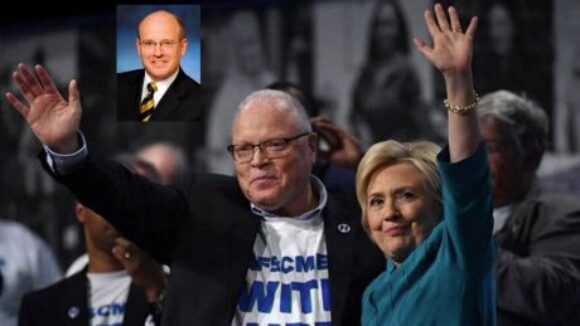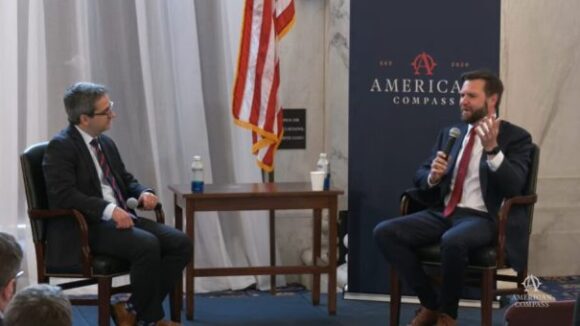The indictment of seven Long Island Rail Road workers for disability fraud last week cast a spotlight on a troubled government agency. Until recently, over 90% of LIRR workers retired with a disability—even those who worked desk jobs—adding about $36,000 to their annual pensions. The cost to New York taxpayers over the past decade was $300 million.
As one investigator put it, fraud of this kind “became a culture of sorts among the LIRR workers, who took to gathering in doctor’s waiting rooms bragging to each [other] about their disabilities while simultaneously talking about their golf game.” How could almost every employee think fraud was the right thing to do?
The LIRR disability epidemic is hardly unique—82% of senior California state troopers are “disabled” in their last year before retirement. Pension abuses are so common—for example, “spiking” pensions with excess overtime in the last year of employment—that they’re taken for granted.
Governors in Wisconsin and Ohio this year have led well-publicized showdowns with public unions. Union leaders argue they are “decimat[ing] the collective bargaining rights of public employees.” What are these so-called “rights”? The dispute has focused on rich benefit packages that are drowning public budgets. Far more important is the lack of productivity.
“I’ve never seen anyone terminated for incompetence,” observed a long-time human relations official in New York City. In Cincinnati, police personnel records must be expunged every few years—making periodic misconduct essentially unaccountable. Over the past decade, Los Angeles succeeded in firing five teachers (out of 33,000), at a cost of $3.5 million.
Collective-bargaining rights have made government virtually unmanageable. Promotions, reassignments and layoffs are dictated by rigid rules, without any opportunity for managerial judgment. In 2010, shortly after receiving an award as best first-year teacher in Wisconsin, Megan Sampson had to be let go under “last in, first out” provisions of the union contract.
Even what task someone should do on a given day is subject to detailed rules. Last year, when a virus disabled two computers in a shared federal office in Washington, D.C., the IT technician fixed one but said he was unable to fix the other because it wasn’t listed on his form.
Making things work better is an affront to union prerogatives. The refuse-collection union in Toledo sued when the city proposed consolidating garbage collection with the surrounding county. (Toledo ended up making a cash settlement.) In Wisconsin, when budget cuts eliminated funding to mow the grass along the roads, the union sued to stop the county executive from giving the job to inmates.
No decision is too small for union micromanagement. Under the New York City union contract, when new equipment is installed the city must reopen collective bargaining “for the sole purpose of negotiating with the union on the practical impact, if any, such equipment has on the affected employees.” Trying to get ideas from public employees can be illegal. A deputy mayor of New York City was “warned not to talk with employees in order to get suggestions” because it might violate the “direct dealing law.”
How inefficient is this system? Ten percent? Thirty percent? Pause on the math here. Over 20 million people work for federal, state and local government, or one in seven workers in America. Their salaries and benefits total roughly $1.5 trillion of taxpayer funds each year (about 10% of GDP). They spend another $2 trillion. If government could be run more efficiently by 30%, that would result in annual savings worth $1 trillion.
What’s amazing is that anything gets done in government. This is a tribute to countless public employees who render public service, against all odds, by their personal pride and willpower, despite having to wrestle daily choices through a slimy bureaucracy.
One huge hurdle stands in the way of making government manageable: public unions. The head of the American Federation of State, County and Municipal Employees recently bragged that the union had contributed $90 million in the 2010 off-year election alone. Where did the unions get all that money? The power is imbedded in an artificial legal construct—a “collective-bargaining right” that deducts union dues from all public employees, whether or not they want to belong to the union.
Some states, such as Indiana, have succeeded in eliminating this requirement. I would go further: America should ban political contributions by public unions, by constitutional amendment if necessary. Government is supposed to serve the public, not public employees.
America must bulldoze the current system and start over. Only then can we balance budgets and restore competence, dignity and purpose to public service.
 Phillip K. Howard examines how union bosses for government workers are fleecing the taxpayers:
Phillip K. Howard examines how union bosses for government workers are fleecing the taxpayers:

